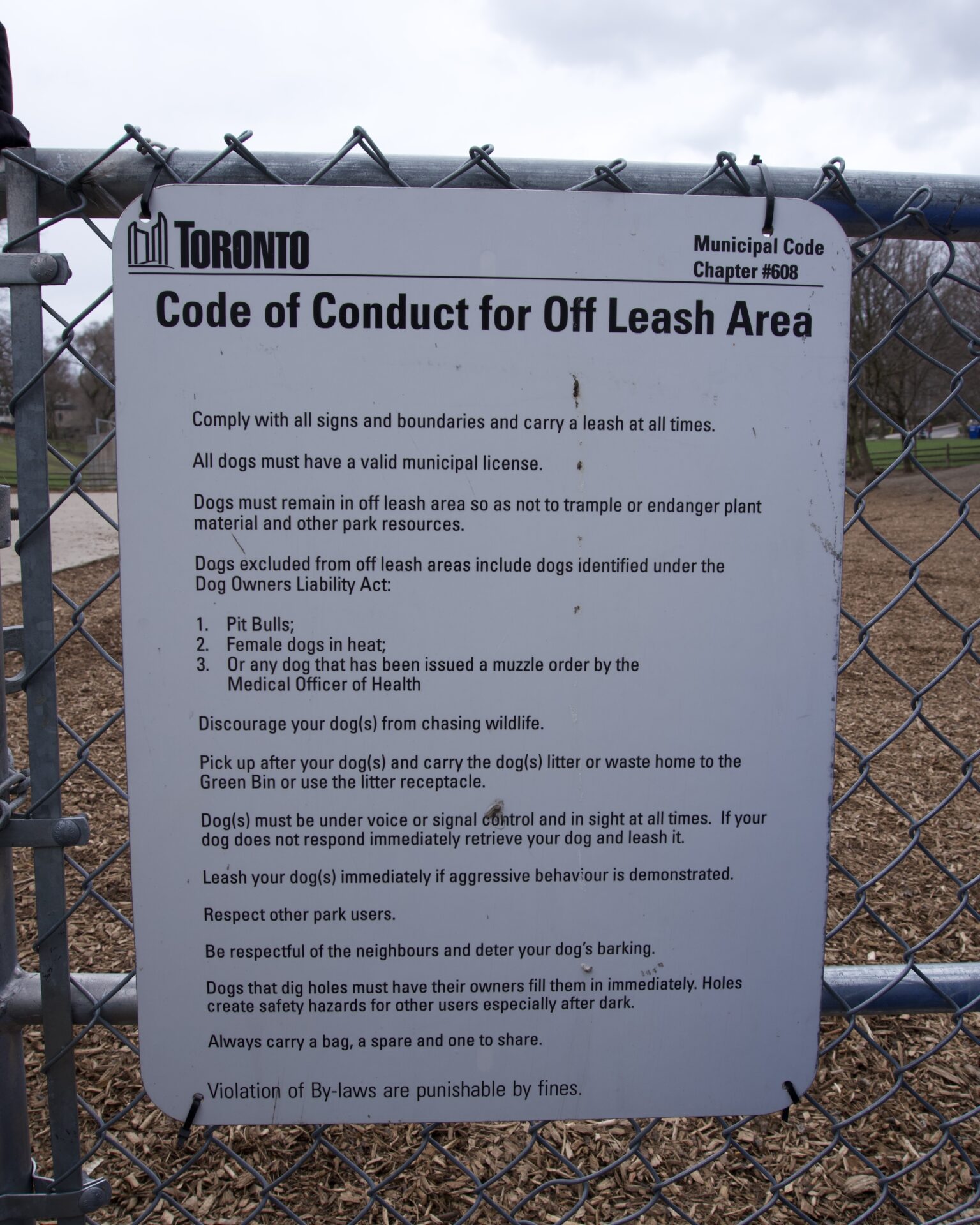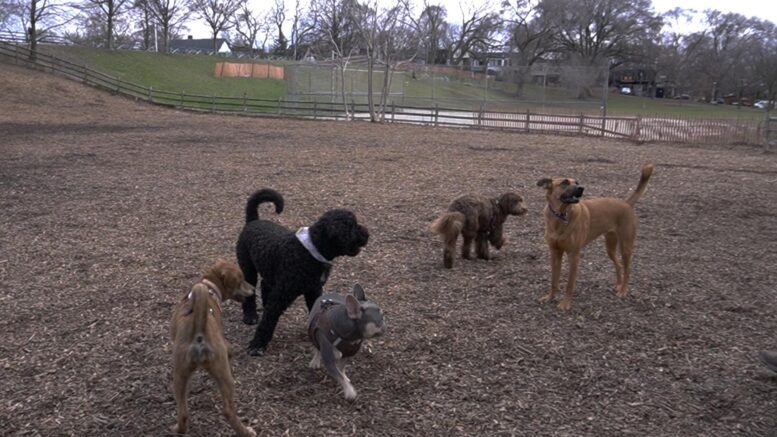In the gentle air, leaves rustle while trees sway softly on this spring morning. Toronto resident and dog owner Caroline Schwim listens to the lively sounds of racing paws and barking dogs all around her.
She turns to her left, giving a wave to her neighbour, then looks down to see her own golden retriever puppy, Hudson, running toward her with a wagging tail and lolling tongue. Welcome to the idyllic atmosphere at the off-leash dog area of Withrow Park, just south of the Danforth, where dogs can run free.
With recent concerns over dog attacks in Toronto front of mind, park renovations and off-leash area expansions present a fresh opportunity for dog owners to find places to exercise and play with their dogs. As spring approaches, dog owners must consider how to safely use these spaces to keep their dogs and other park users safe.
Owning a dog comes with responsibilities, especially when using off-leash dog facilities. Not everyone is convinced they are a good idea.
Similar to many other residents of Toronto, Schwim depends on off-leash dog parks to allow two-year-old Hudson the chance to frolic and stay engaged. They go several times a day.
“I think we need more green spaces, park spaces — always with a little off-leash section for the dog children,” she said as Hudson wandered nearby.
WATCH | Dog owners explain the benefits of off-leash areas:
The City of Toronto has developed a total of 79 off-leash areas, with more than 10 planned for development over the next five years. The majority of off-leash zones have been established in the last 15 years, with six new locations opened in the last five years.
“In many cases, the delivery of an [off-leash area] is part of a larger project (a new park or improvements to a park) as it is one of many amenities delivered through the project and captured in the project budget,” a spokesperson for the City of Toronto said in a statement.
City Council tasked the Parks, Forestry, and Recreation department with crafting a comprehensive strategy for off-leash dog areas across the city last fall. Staff members are now conducting a thorough assessment to grasp the overarching needs of the city. It focuses on analyzing the creation and management of new off-leash zones, improving and maintaining existing areas, as well as improving people’s satisfaction with them. The findings will be presented to the city council by the end of the year.
Coun. Chris Moise, who represents Ward 13, Toronto Centre, has voiced his support for the initiative to develop a comprehensive dog park master plan. He told CBC News late last year that the city houses an approximate 300,000 dogs, yet there’s a shortage of off-leash spaces to satisfy the rising demand.
He also said that the absence of easily accessible off-leash dog areas has prompted many owners to allow their dogs off-leash areas such as school zones and other spaces where off-leash dogs are prohibited.
This was seen in an incident in March at Little Norway Park, during which where a dog attacked a child in a playground area that was not designated for dogs off-leash. The child suffered severe, life-altering injuries as a result.
The City of Toronto has taken steps to enhance these spaces through renovations and new designs for dog parks. Newly created off-leash zones have been established in Love Park, Zorra Park and Huron Street Playground within the last year. Future plans are underway for another off-leash area in Grand Avenue Park.
Off-leash dog areas and dog health
These improvements provide opportunities for Toronto’s dogs to enjoy physical activity and socializing with their fellow furry companions. These designated spaces serve as essential amenities for both canine companions and their owners. Within these off-leash areas, opportunities for interactive engagement and physical activities, enriching the experiences of all involved.
Eric Code, Founder of Toronto Dog Park Community, emphasized that the experience of dogs running off leash in these designated zones cannot be matched by the physical exercise they receive anywhere else.
“Nothing compares to the exercise (a dog) gets when running off leash,” he said.
“People enjoy seeing their dogs run off leash, and they benefit from that experience in the exact same way that park users benefit from playing tennis or playing baseball or going for a hike or going mountain biking, because these are all experiences of people who use parks with things. The thing is the baseball bat, the tennis racket, the bike.
“In our case, it’s a dog. And that thing is alive.”
The advantages and drawbacks of off-leash areas
But not everyone feels giving dogs spaces to roam freely in the city is a good idea.
Prof. Margaret Schneider, who specializes in the study of human-animal bond and is affiliated with the Applied Psychology and Human Development department at the University of Toronto, said off-leash areas are “a bad idea because you don’t really know whether your dog (enjoys) being with the other dogs.”
“A lot of people don’t understand … whether their dog is having a good time or not having a good time,” she said. “That takes a lot of observation.”
Schneider emphasized the importance of closely monitoring dogs while they engage in play within these areas – an aspect she said many owners often neglect.
Dog parks also have an extensive list of rules that dog owners must follow to keep everyone safe.

She also said that dogs must have a job in order to exercise their minds. This can be demonstrated through “basic obedience,” including commands such as sitting or offering paw.
Code acknowledges that off-leash areas do not address every concern and stressed the importance of responsible dog ownership, adherence to bylaws, and bylaw enforcement. But to him, the benefits outweigh the risks.
Back at Withrow Park, Schwim explains that she takes Hudson to off-leash areas two or three times a day. Living in an apartment, she considers them vital to his health. Their favourite spots include the Gerrard Carlaw Parkette and Withrow Park.
“They are super important to me,” she said. “I choose where I’m going to live based on proximity.”
These designated spaces offer a safe haven for dogs to exercise and socialize. By utilizing these areas, pet owners can demonstrate responsible pet ownership while also catching a break in the busy city.

